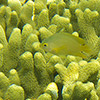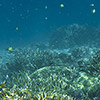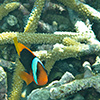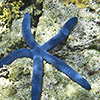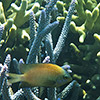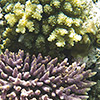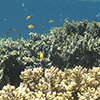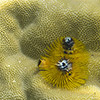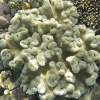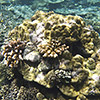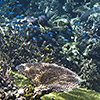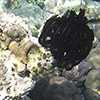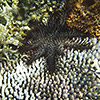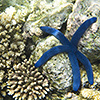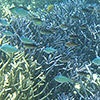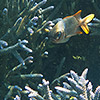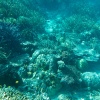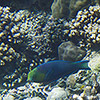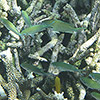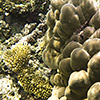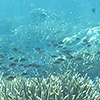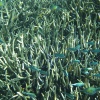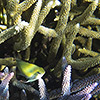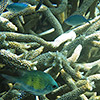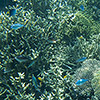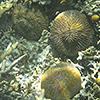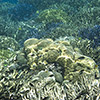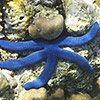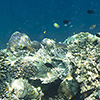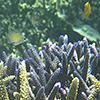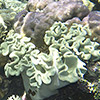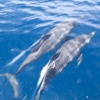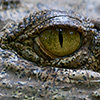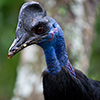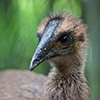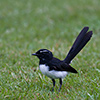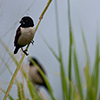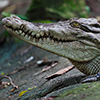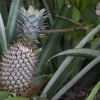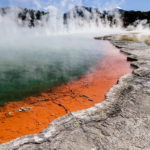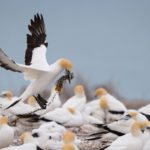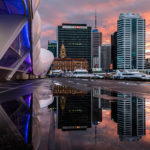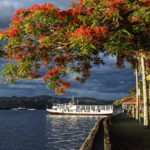Rumbling Rabaul – The raging Cauldron of Tavurvur
If you take the North Coast Road instead of the North-East toward Tavui to the south-east, you reach Ataliklikun Bay where a handful of bungalows huddle together along the shore. The Kabaira Dive team has set up a camp here and kidnaps diving enthusiasts into the colourful submarine world around East New Britain. The Kabaira team knows this area like the back of their hands and if even if I didn’t scuba dive, a snorkel would be sufficient equipment with which to explore a fantastic underwater world just centimetres beneath the crystal clear turquoise surface of the water. The corals have not been damaged and everything is in pristine condition, though the water is so salty it almost makes you sick.
The next stop is Urara Island where the scuba divers and I are dropped off. As the boat shoots over the water, flying fish flee en masse, gliding just above the surface to escape the danger. In the distance rays jump out of the water, and as dolphins ride the bow wave of the boat, the level of anticipation goes sky high and even the first dive above the beautiful coral of the reef to the north of Urara turns into an unforgettable adventure. Later, during the second dive, we move into the Lighthouse Reef – further south but equally spectacular.
A further highlight is the Oisca Wildlife Refuge, where you can feed the rare cassowary (a flightless bird) and see the even rarer cuscus face to face. Oisca is actually a farm project designed to teach the inhabitants of New Britain sustainable agriculture, as the rarity of animals such as the cuscus is unfortunately due to human consumption.
Around Kokopo the infrastructure is better, but the must-see places are a long way from the new province capital and are much easier to reach from Rabaul, a more charismatic location even when the volcano is showering the city with ash. In locations such as the Hamamas, the Rabaul hotel run by Australian expat Miss Suzie, the conflict between the human presence and volcanic activity is noticeable. The hotel offers easily the best food in the region to boot, as the island world of New Guinea has neither a distinctive cuisine nor abundant seafood, despite the proximity to the ocean.
Staying in Papua-New Guinea has become pricey in recent years and inflation is particularly noticeable on the hip pocket on the islands. The reason is the huge increase in energy prices (particularly electricity fuelled by diesel), which affects all facets of life directly and indirectly. This meant for example an increase in the local fruits such as pineapple, coconut or papaya from less than 1 Kina to a healthy 4-5 Kina to enable locals to maintain their standard of living.
All volcanic and seismically relevant data and all diagrams are from the 2009 Rabaul Volcano Workshop Report, made available by Wally Johnson (ANU) and Ima Itikarai (RVO). Lads, it was a privilege to share this unique place with you both, to have the pleasure of your company and conversation and to learn all that I have from you. I wish you all the best from the other side of the world and good luck in your future endeavours! And many thanks to my friends Jenni Clarke and Heike Accorsi for helping me translating my adventures into English in those busy times.
- Immigration of Papua New Guinea
- Rabaul Hotel – the famous Hamamas hotel
- Kabaira Dive – the dive experts in East New Britain
- Air Niugini – PNG’s airline
- Papua New Guinea section of Lonely Planet’s ‘Thorntree Forum’
- Dokumentation of Tavurvur’s 1994 eruption – a detailed description of the eruption
- Relacs Analysis of Rabaul Caldera
- RVO – Rabaul Volcanic Observatory
- Status updates on Tavurvur
- Eruption video of Tavurvur – showing the immense blast wave of an eruption
